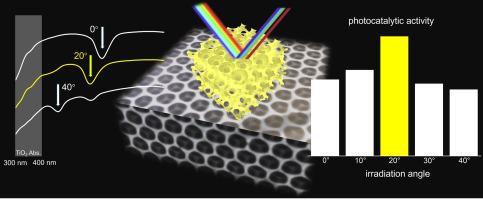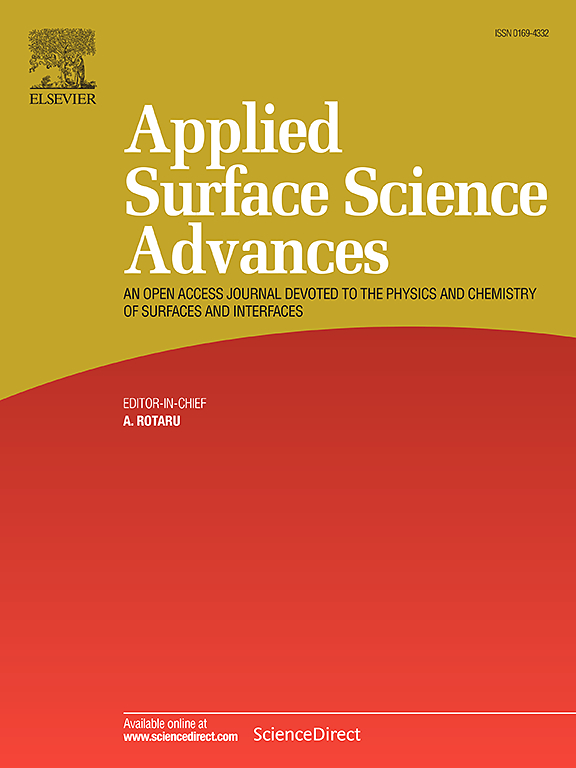Development of inverse opal titania films for efficient photocatalysis
IF 8.7
Q1 CHEMISTRY, PHYSICAL
引用次数: 0
Abstract
Efficient light harvesting is considered a promising approach towards the commercialization of heterogeneous photocatalysis. Accordingly, photonic crystals might be a perfect example, but their fabrication might be challenging. In this study, inverse opal titania (IOT) films were fabricated via a co-assembly approach using a titania mixture sol containing both amorphous and crystalline titania. This method enables the preparation of highly ordered, crack-minimized structures by optimizing synthesis parameters. The obtained films were characterized by various methods (XRD, SEM, UV/vis) and tested towards photocatalytic generation of hydroxyl radicals (via hydroxylation of terephthalic acid). It has been found that both film thickness and crack-free morphology are decisive for photocatalytic performance. Interestingly, the irradiation angle influences not only optical properties (photonic bandgap (PBG) wavelength) but also overall photocatalytic activity. It has been found that 20° is the best angle of irradiation, at which additional bands are formed, corresponding to intrinsic photoabsorption by titania. Moreover, it is proposed that by simple change in irradiation angle, photonic properties could be tuned, allowing both photocatalytic activity enhancement and mechanism investigations.

高效光催化用反蛋白石二氧化钛薄膜的研制
高效光收集被认为是多相光催化商业化的一种很有前途的方法。因此,光子晶体可能是一个完美的例子,但它们的制造可能具有挑战性。在这项研究中,使用含有非晶和结晶二氧化钛的二氧化钛混合物溶胶,通过共组装方法制备了反蛋白石二氧化钛(IOT)薄膜。该方法通过优化合成参数,制备出高度有序、裂纹最小化的结构。采用XRD、SEM、UV/vis等方法对制备的膜进行了表征,并对羟基自由基(对苯二甲酸羟基化)的光催化性能进行了测试。研究发现,薄膜厚度和无裂纹形貌对光催化性能有决定性影响。有趣的是,辐照角度不仅影响光学性质(光子带隙(PBG)波长),还影响整体光催化活性。结果表明,最佳的照射角度为20°,在20°处可形成附加带,对应于二氧化钛的本征光吸收。此外,本文还提出,通过改变照射角度,可以调整光子特性,从而提高光催化活性和研究机理。
本文章由计算机程序翻译,如有差异,请以英文原文为准。
求助全文
约1分钟内获得全文
求助全文

 求助内容:
求助内容: 应助结果提醒方式:
应助结果提醒方式:


